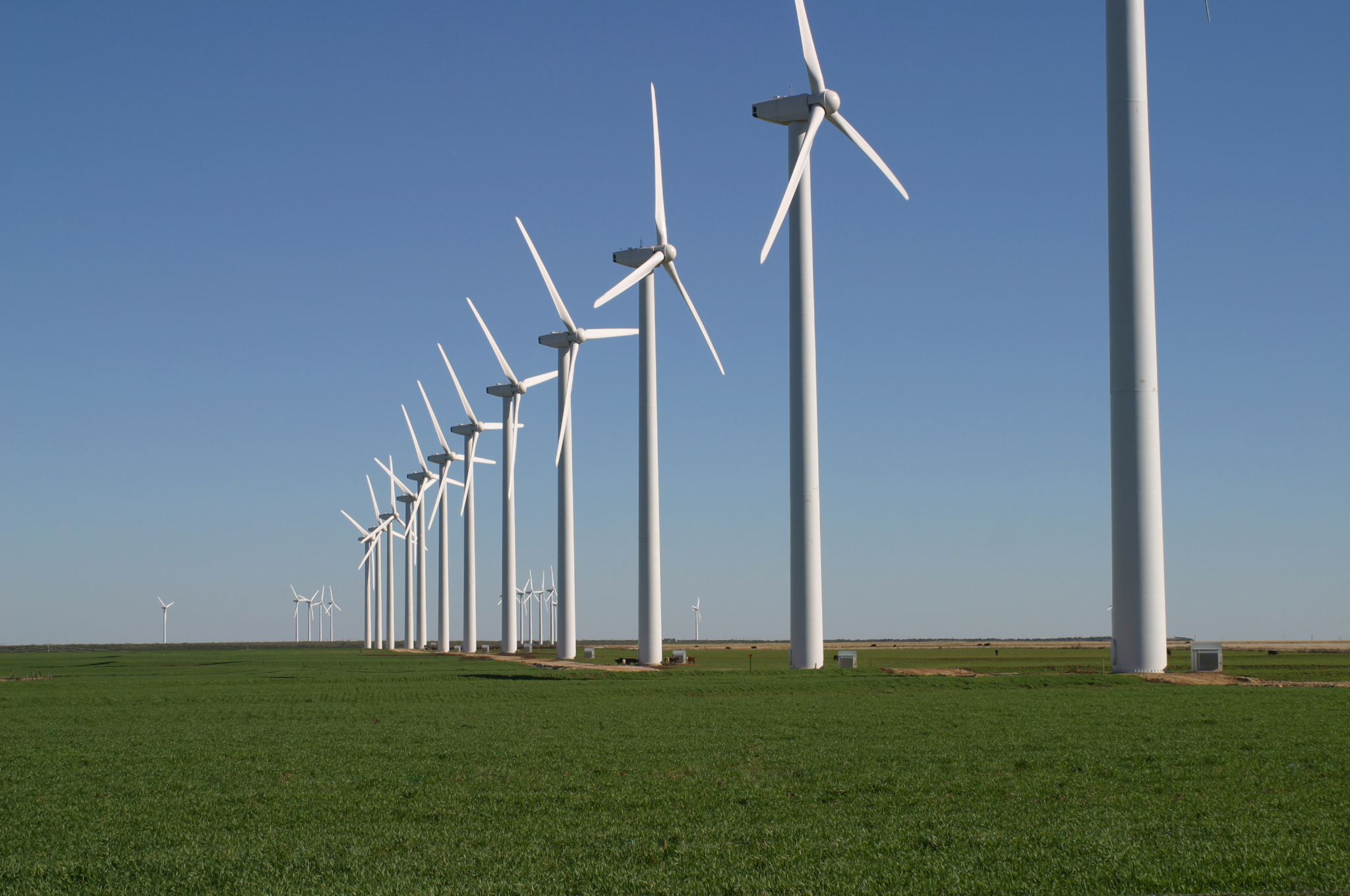The U.S. Environmental Protection Agency (EPA) just proposed new rules for the utility industry. Despite players like Xcel Energy (XEL +0.33%) working hard to improve their carbon footprint, industry outsiders like Google (GOOG 0.85%) may actually benefit from the EPA mandate to trim carbon dioxide emissions by 30% by 2030.
Xcel Energy is blowing in the wind
In 2005, roughly 80% of Xcel Energy's power came from carbon-based fuels (coal and natural gas). That's important, because 2005 is the reference date for the EPA's reduction plan. Last year, coal and gas made up about 70% of Xcel's power. Wind farms have picked up the difference.
Wind is a carbon-free power source, showing that Xcel is already well on its way to satisfying the EPA's demands. But it isn't done yet; by 2020 Xcel plans to have carbon fuels down to just 60% of the pie. Wind, meanwhile, will have increased from 3% in 2005 to 22% in 2020. Xcel believes this wind power shift will allow it to reduce CO2 emissions by 30%, meeting the EPA target.
That said, in 2020 Xcel will still be heavily reliant on coal (43% of its power) and natural gas (18%). So while Xcel is clearly being proactive on the carbon front, it is also facing the reality that it needs reliable base-load power, and carbon-heavy fuels are a cheap and reliable option. This is going to be a difficult issue for the power industry to overcome.

(Source: Leaflet, via Wikimedia Commons)
Google on the demand!
That's where Google comes in. This technology juggernaut is known for taking on challenges well outside of its search and video strongholds. For example, its driverless cars have been making headlines, and likely scaring a few auto execs, recently.
The common theme here is that Google is using its technology know-how to improve everyday life in new ways. That's why power could be the next big thing for Google. For starters, it's investing heavily in renewable power. As an example, it was a key backer of the giant Ivanpah solar installation in California.
That's a big part of the company's commitment to the environment and tags along with Xcel Energy's wind power theme. However, Google is also working hard to control its consumption of power. Its data centers, for example, use 50% less power than the average. And its offices are no different, with Google highlighting that it uses "sophisticated building control technologies to ensure systems are on only when we need them."
That's the demand side of the energy equation, and Google is ready to bring some of its "sophisticated" control systems to your home. Early this year it agreed to pay $3.2 billion for Nest Labs. That company makes a smart thermostat. Thermostats may not sound exciting, but they are an important piece of the carbon puzzle.
Plenty of options
The EPA plans to give states broad leeway in how they reduce their carbon footprint. That includes on the demand side, with customers upgrading their homes to use less power. Google's Nest investment will allow it to ride that wave. Moreover, it will give Google a key seat at the table with utilities like Xcel.

(Source: grantsewell, via Wikimedia Commons)
Xcel Energy is facing relatively large expenses in its efforts to reduce its carbon footprint, with plans to spend nearly $15 billion over the next five years. To give you an idea of the magnitude of that expense, Xcel Energy's market cap is just over $15 billion.
Google's revenues, meanwhile, topped $16.8 billion last year, and its net income was $3.3 billion. Google has more than enough firepower to back its Nest push. Better yet, smart thermostats will create massive amounts of data that Google can parse—something it does exceptionally well.
Advertising is still the big driver at Google, but products like Nest and the driverless car that help the tech giant invade aging but vital industries show that companies like Xcel have more to fear than just government regulations. And this incursion comes at a time when Xcel Energy and other utilities face big bills to reduce their carbon dioxide emissions.







